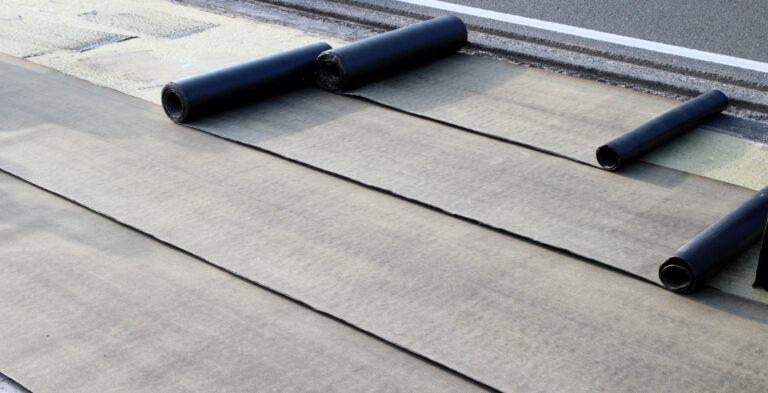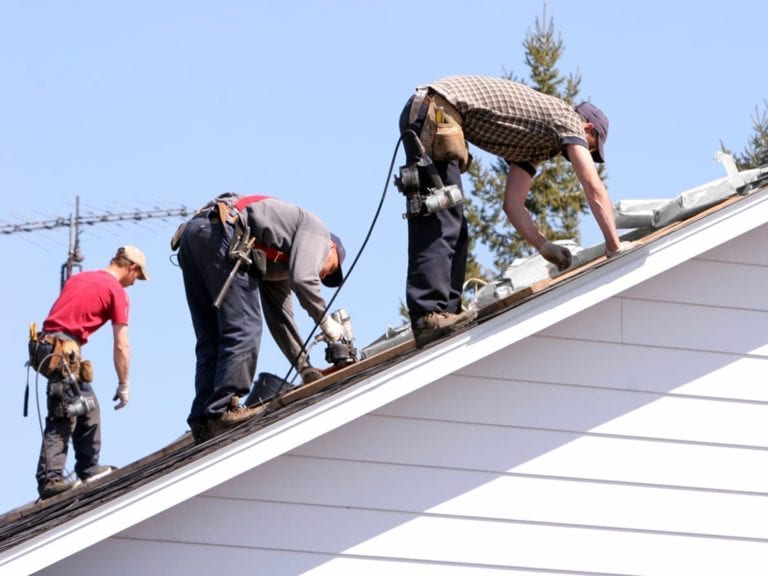The Ultimate Guide To Choosing Your Roofing Shoes
Wearing the right pair of shoes for roofing work is essential to keep roofers safe, productive and comfortable. As a residential shingle roofer, throughout your day, you walk on steep pitches. You’ll stand on various surfaces, from shingles to decking. Some roofing materials, such as synthetic underlayments, have a texture designed to make them easier to walk on. However, most can be fairly slippery surfaces. You should have a personal fall arrest system, but quality roofing boots that grip well and keep you steady are still an important part of your workplace safety. Plus, your shoe quality affects more than your safety. The right roofing boots can improve your comfort and productivity, helping you to not just avoid injuries, but also to be more comfortable and more successful at work.
You may be surprised by the unique features that shoe manufacturers have come up with just for roofers. There are shoes with unique straps meant to keep your foot from moving around inside your shoe when walking on steep roofs. You’ll find shoes with raised heels, ankle grips and other unique features to make roofing a little easier on your feet.
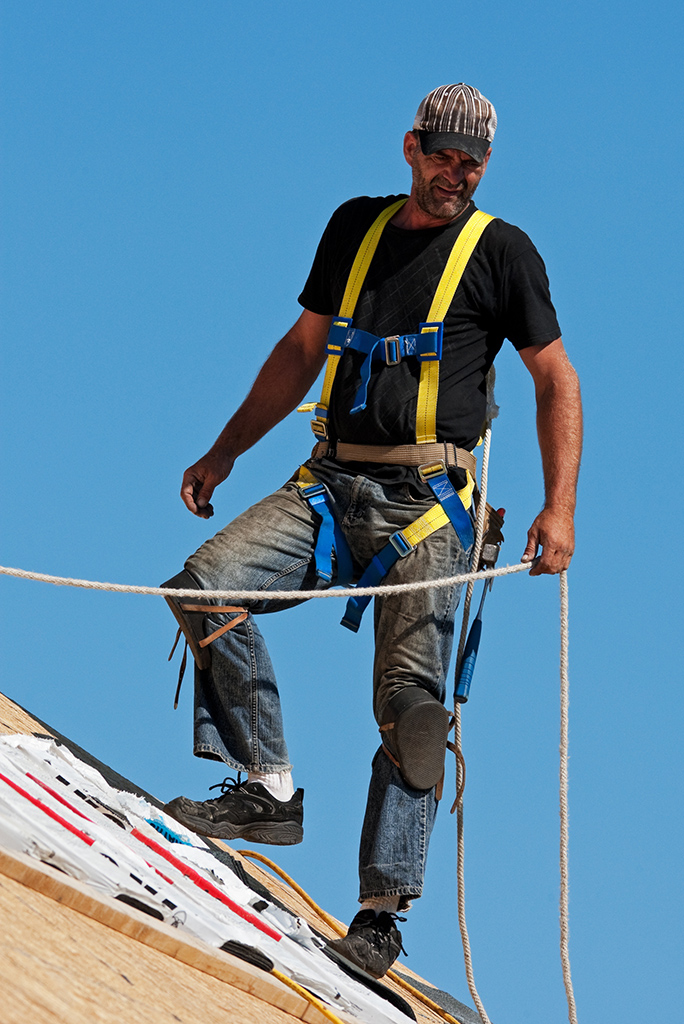
So, what goes into choosing a roofing shoe (or boot) that will serve you well? We’ll walk you through what you should consider for your roofing shoes, the unique features some shoe manufacturers have designed to make roofing safer and other practical tips about how to choose your ideal roofing footwear. We won’t try to promote one brand over another, but we will tell you how different types of shoes might fit your needs in a work boot.
Safety Requirements for Roofing Shoes
Before you start comparing shoes, you should find out what your national and local safety authority requires. The Occupational Safety and Health Administration (OSHA) does not currently have any specific requirements for roofing shoes. However, they do require employers in the trades and construction industry to ensure that employees are protected from injuries from objects that may fall on their foot or pierce the sole of their foot. Roofers may have to deal with both of these safety concerns, including shingle bundles dropping on feet and nails piercing feet from below. So, your roofing boots should provide adequate protection both top and bottom.
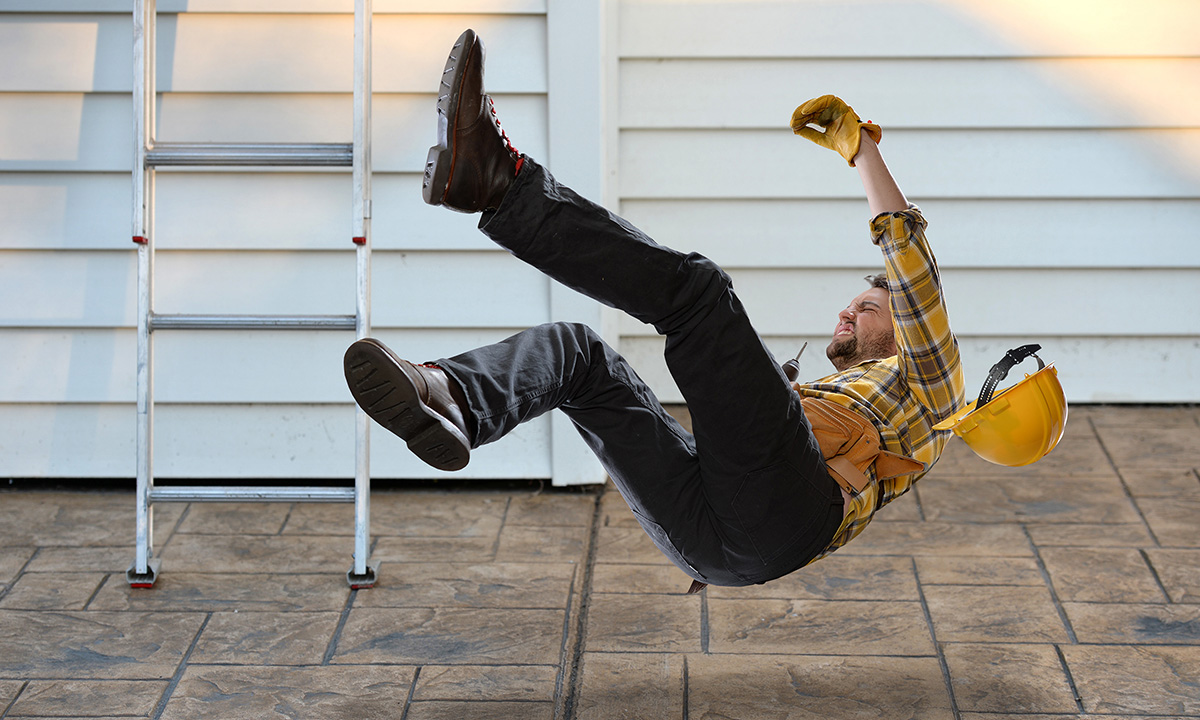
In addition, ASTM International has testing standards for the quality of foot protection. While following these standards may not be required, it can be wise to find shoes that meet their criteria. Few shoes are tested as per ASTM standards, but those that were designed to be work boots are more likely to have undergone testing.
Your workplace may also have specific guidelines for your shoes. Certain employers may require steel-toe boots or even a specific brand of shoe. It’s always wise to look these requirements over before you start shopping.
Further, you should know that no shoe will address the safety concerns of working on a frost-, ice- or snow-covered roof.
What To Look for in a Roofing Shoe
What should you consider when you examine any pair of shoes for roofing work? Here are important shoe characteristics that you should look for:
- Grip: Your shoes need to provide a high level of grip to help you keep your balance on the roof. Shoe grips may be made of ethylene vinyl acetate rubber, neoprene or other materials. Grip patterns are molded into this material on the bottom of the shoe to provide increased traction. Larger shapes will provide more grip on asphalt shingles. On the other hand, it’s a fine balance in the roofing shoe world between a quality grip and other factors, like impact and weight. Plus, shoes with smaller, finer, nonslip soles may be better for smoother materials, like clay tile or metal roofs. It is wise to walk with the shoes on different roofing materials to see how they perform.
- Impact: When you’re walking on the roof, you don’t want to rip shingles, dent them, scuff them or cause damage to other roofing materials, including metal and tile. Ideally, you’d choose shoes with a relatively soft outsole. Those made of firmer materials may impact the shingles. This is especially true in hot weather, when the shingles may be softened by the sun. In this case, scuffing is a common problem unless you have soft soles.
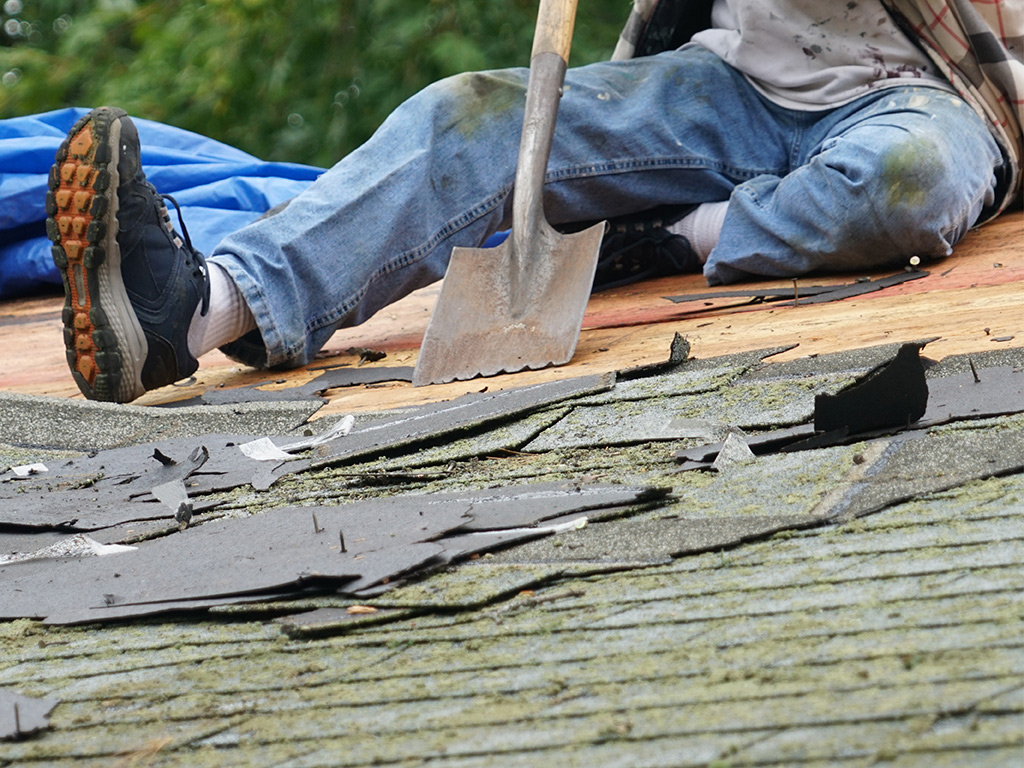
- Safety: Your shoes play an important role in keeping you safe from injury. Proper fit is critical for safety. The shoe should fit the arch of your foot and support your ankle. We show you how to determine your foot arch below. Toe protection is also important to protect your foot from injury via shingle bundles or other heavy objects dropping on your foot.
- Durability: You may buy shoes regularly as they wear out while you’re working. Ideally, you’d choose a highly durable shoe, so you’re buying less often and getting more value for your money. Daily use will slowly wear down your roofing boots, but some will be more resistant to wear and tear than others. One important thing to check for is that the shoe is not damaged when you step on nails. When properly driven, the bottom of the nail head is flush with the decking. Some shoes have soft soles that may start to tear as you step on the nails, while others will resist this for much longer.
- Flexibility: It is also crucial that the shoe stand up well to being flexed. When you’re on steeply pitched roofs, the sole may need to flex considerably.
- Comfort: A shoe that pains you will interfere with your work and could result in long-term injury if you ignore that pain. Ensure that your shoe has a good fit, secure lacing that will keep your foot immobile within the shoe and memory foam cushioning on the sole and ankle. Try walking on a sloped surface when considering the shoe to assess how it will feel when you’re on the roof.
- Weight: Lighter shoes will be more comfortable, and they will also help reduce your fatigue. Staying agile throughout your day is essential to be productive and safe.
- Weather: The weather will challenge your shoes in several ways. In summer, the asphalt or other roofing material will be hot, so your shoes need a thick sole to compensate. They should also have some ventilation to allow sweat to escape and keep you cool while roofing. In winter, you need to think more about the warmth of the shoe. If you live in a temperate area, you will likely need two pairs of roofing shoes, one for each roofing season.
- Cost: How much you’ll pay for your shoes is also something important to consider. There are two general strategies: roofers who buy one expensive pair and predict they’ll last for a long time, and roofers who choose less-expensive shoes and know they’ll replace them more often. Experience will help you choose which method is best for you.
Of course, you should find a balance between all these characteristics that best works for you.
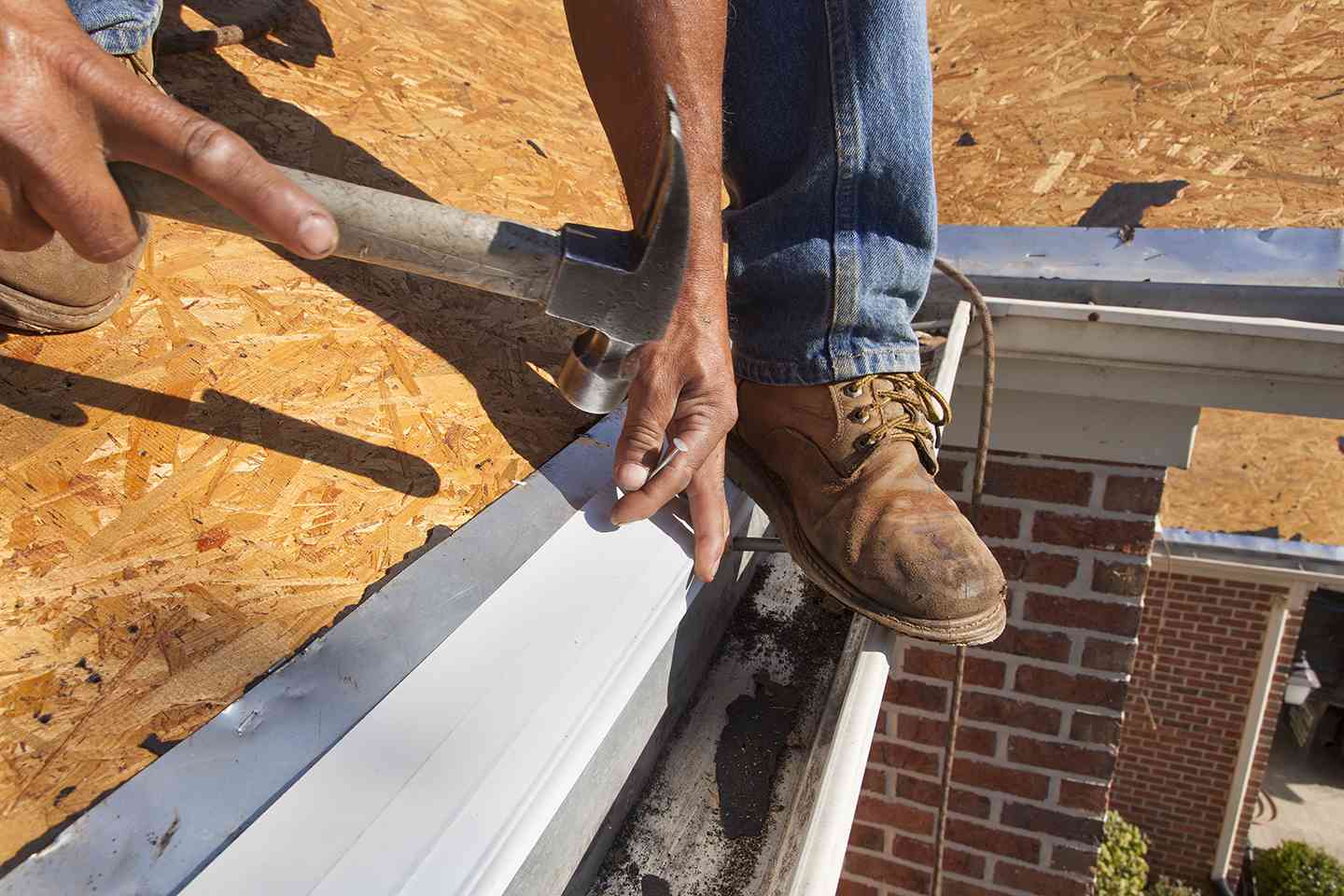
How Do Shoe Types Match Up?
When you start looking at roofing shoes, should you restrict yourself to one type of shoe or another? Roofers are conflicted on which kind of shoe is best, with some swearing by hiking boots, others strongly preferring work boots designed for other trades and others preferring other types of shoes altogether. You may be able to find a shoe with the right balance of features for you in boots, skateboarding shoes or other kinds of shoes. In general, this is how different kinds of shoes match up to the general requirements for a roofing boot:
- Steel-toe boots: Some steel-toe boots are heavy and less flexible, which means they are not ideal for roofing. However, some brands make more lightweight steel-toe boots that can fit your needs and fulfill safety standards if your health and safety authority requires you have built-in toe protection.
- Running shoes: When soft and flexible, running shoes can be comfortable on the roof. However, they often don’t provide enough ankle support and can sometimes have bulky traction features that could damage roofing materials. Plus, their traction may also not be right for smoother roofing surfaces, like metal.
- Hiking shoes: Hiking shoes or boots can make up for some shortfalls of running shoes, offering more ankle support. They are also often designed for long hikes in outdoor conditions, so many have ample cushioning and good ventilation. However, they often have heavy traction features that could potentially damage roofing materials.
- Skate shoes: Skate shoes have comparatively smooth surfaces and less exterior grip. Both features are a good thing for many roofers, especially those working on relatively smooth surfaces. However, skate shoes may not be the most durable option. For example, they typically have canvas uppers, which can wear out quickly. Plus, their soft sole is more likely to get torn up by nails. They also rarely offer toe protection and ankle support.
- Climbing shoes: Climbing shoes seem like a natural fit for roofing. They allow for a huge range of movement to let you walk on very steep roofs. Plus, they value both grip and low weight. However, they very rarely provide toe protection or enough ankle support for construction-related work.
- Boots: Many roofers prefer to wear professional boots designed for work in other industries. However, even general-purpose boots may be suitable. They are more likely to have ample toe protection and other safety features. However, this may make them a little heavier than is ideal for work on a roof.
- Snow boots: Boots meant for wearing in the winter may be a good idea for winter roofing. They may offer excellent insulation to keep you warm. However, they may not be as flexible as other shoe options or lightweight enough, just due to the sheer amount of insulation they require.
Common Roofing Shoe Features and Accessories
Specialized roofing shoes may have unique features or accessories designed to make roofing easier. Or you may want to add some accessories to make yourself more comfortable. Here are some of the features and accessories that might be of interest to you:
- Straps: Some shoes have straps over the laces to keep the shoe fastened more securely on your foot when you walk on steep slopes.
- Split toes: While you can’t feel the roof through traditional shoes, some shoes that are designed specifically for roofers have a split toe to allow you to feel the roof. This helps you walk on the roof more naturally.
- Raised heel and midsole: With a thicker heel and midsole, you can stand more comfortably. The heel provides balance while the midsole supports your foot to prevent overstretching of your tendons and muscles in the back of your leg.
- Magnetism: With magnets in the sole, some shoes give you a bit of extra grip on metal roofing. The magnet’s pull is strong enough to provide grip, but weak enough that you can still walk smoothly.
- Replacement pads: Many brands have created replaceable pads for the bottom of your roofing shoes. When they wear out, you can replace just the pad instead of the whole shoe. And you can switch between smooth pads that won’t damage shingles and spiked pads that help you stay on the roof during the tear-off process.
- Puncture-proof outsole: Some shoe manufacturers make guarantees about the quality of their sole; some claim that they are puncture-proof. These may have steel plates or other thick materials that will protect you from nails.
- Antimicrobial agents: Working in the sun all day can contribute to odorous bacteria growth in your shoe. Some brands have antimicrobial agents built in that are supposed to reduce smell.
- Quick-dry materials: Quick-dry materials are supposed to dry better between shifts and also reduce the likelihood of smells.
- Covers: Some manufacturers make roofing shoe covers that go on the bottom of your boots when you’re on the ground. They stop you from tracking mud and dirt on the rooftop. You can also take the covers off when in a client’s home to prevent tracking mud there too.
- Cleats or spikes: Built-in cleats or spikes give extra traction while walking on shingles that will be replaced.
- Padding: Shoes that offer additional padding around the ankle can help support your ankle while you’re on the roof and prevent injury.
- Lacing options: Test out the shoes and see how fast they are to lace up and unlace. Some have Velcro straps designed to save you time; others have brass clips for the same purpose.
- Sewn-in tongues: Tired of fishing the tongue out of the shoe when you need to put it on? With a sewn-in tongue the shoe will be easier to get on.
- Steel toes: Of course, many roofing shoes offer either steel toes or reinforced toes to protect your foot.
- Ankle angle: The shape of the back of the shoe makes a big difference for ankle support. Try walking the shoe on an angled surface to determine if the ankle angle is right for you.
- Heel grip: Some shoes offer a thicker grip on the heel, both to maintain stability and to raise the back of your foot to reduce stress on your Achilles tendon.
How To Estimate What Kind of Foot Arch You Have
Many work boots and shoes have specific designs for people with high and low arches. The design differences include both the support inside the shoe and the overall curve of the shoe. Should you invest in a shoe designed for low or high arches to make your workday more comfortable? There’s a simple way to check your arch to know whether you need something special.
Get a dry piece of cardboard and dip your foot in your bathtub or a basin of water. Then, step on the cardboard. Your footprint reveals the arch of your foot. Look at the middle part of the print that connects the front ball of your foot and your heels. If your print looks like a classic footprint with some arch visible, but not all of it, then you have a normal arch. If you find that there is little visible print connecting your heel and the front of your foot, you have a tall or high arch. Footprints that look thick in the middle mean that you have low arches or even flat feet. You should confirm this with a podiatrist or footwear specialist before you purchase work shoes.
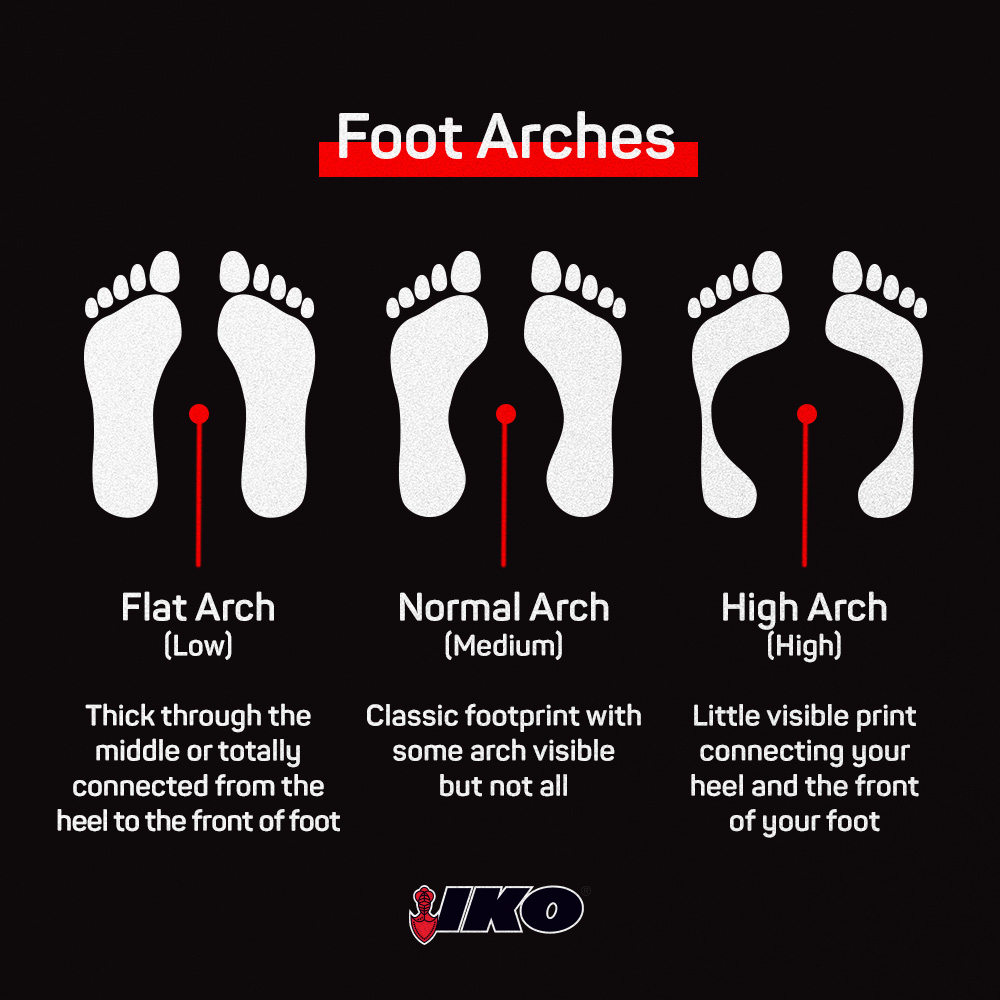
In general, you should look for these features if you have flat feet: straight sole and insole (the shape of the shoe on the inside), stability features and ankle support. If you have high arches, you will probably find shoes are more comfortable if they have extra cushioning and a slightly curved sole and insole. Your podiatrist may be able to provide you with more specific recommendations based on the curvature of your arches.
Special Considerations for Women’s Roofing Shoes
Many shoe manufacturers have caught on that women work in the trades too and now offer a line of work boots just for women. However, you may still not be able to find a woman’s work boot that you’re satisfied with. If so, one option is to buy a pair of men’s shoes. In North America, men’s shoes are about one and a half to two sizes larger than women’s shoes of the same number. So, a woman’s size 9.5 is a man’s size 7.5 or 8. You can buy a “smaller” size in men’s shoes that will fit your feet. However, men’s sizes only go down to 5.5, so only women with feet that measure size 7 and up can use this strategy.
The width of a shoe also translates well across sizes. So, if you find that you’re a woman’s size 10, and the width is correct for you, the men’s size 8.5 or 8 should also be a comfortable width for you. Still, you might look into manufacturers with a reputation for making more narrow shoes or even sizing their shoes by width to get that perfect fit.
If you’re looking at unisex boots for work, they are usually in women’s sizes, so no adjustment is necessary.
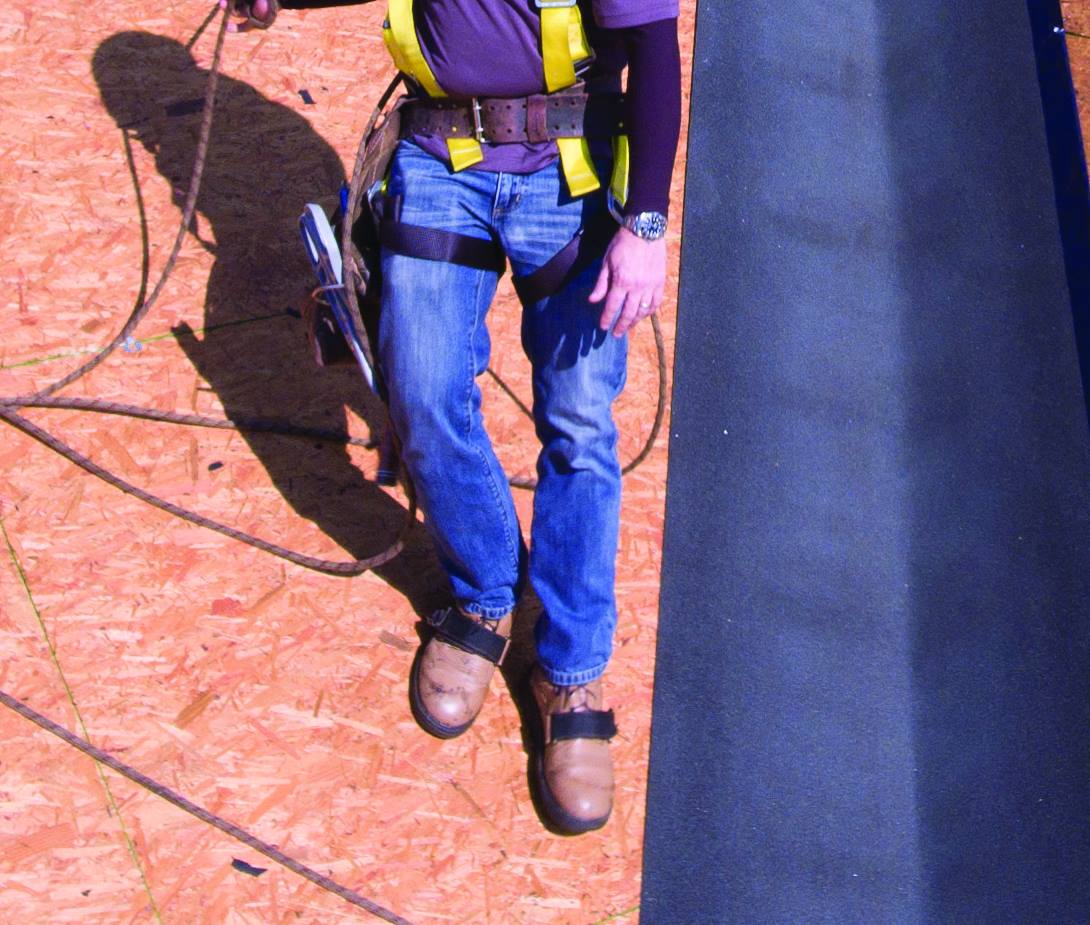
Your Safety and Comfort Are Most Important
Choosing the best roofing shoe for your unique needs and feet is critical to stay safe and productive on the job. Taking a little time to try on different shoes from multiple brands will help you make an informed decision that will pay off down the road when you’re more comfortable and productive at work.
If you’re looking for more equipment to help you work more productively, explore your options for shingle roofing tools and other equipment.


